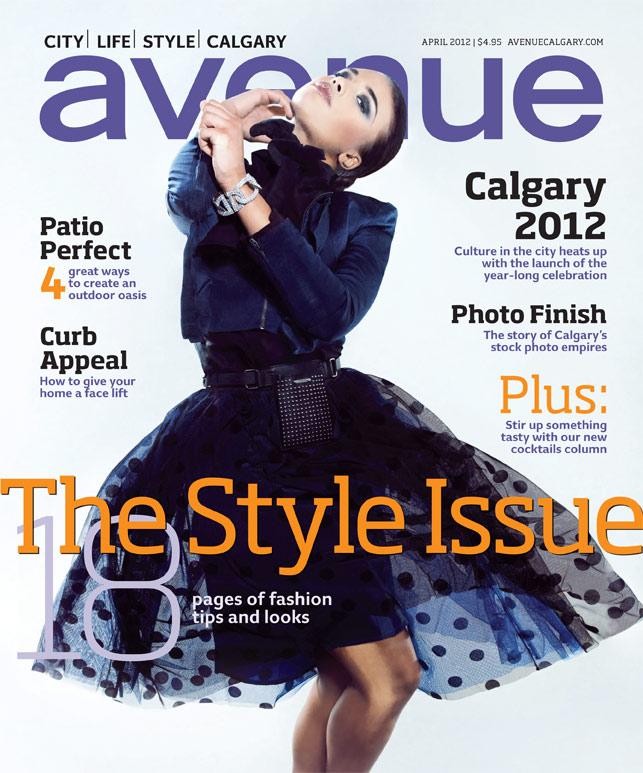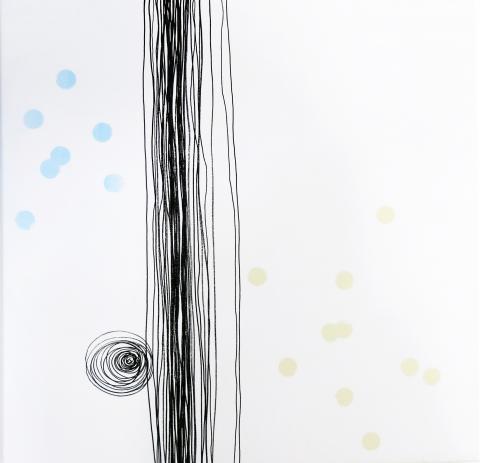2019 Alumni Legacy Award
INTERVIEW BY KERRY MAGUIRE, BFA '18

Avenue Magazine, March 2012
KERRY MAGUIRE: How did you end up going to art school?
ANDERS KNUDSEN: When I was a kid in junior high and high school, that’s just what I did. It wasn’t just a hobby or something I only did some of the time. I am an immigrant to Canada from Denmark and grew up with both of my parents being blue collar. I was never good with things like hammers and nails, so in pursuing art I just went toward what I was good at. I was lucky to have an art teacher in school who really pushed me; considering all those factors, it was never a question. I just did art.
MAGUIRE: When did you graduate from AUArts, and from what program? Is this what you had initially decided to do, or did it change during your time at AUArts?
KNUDSEN: I graduated in 1988 from Visual Communication Design [VCD]. I started and finished in that program, and never thought of changing. It was a really difficult program, but I liked that about it. I was pushed artistically in ways that I hadn’t been in high school. Even though it was difficult — almost every day I started working at 9 a.m. and went until midnight — I never hated it. I have always had that feeling through my entire career: no matter how hard or long I was working, I still loved what I was doing.
When I left school, I noticed that magazine design got me really excited. I was really drawn to publications like Raygun [a now-defunct alternative rock ‘n roll magazine]. I thought, “Why wouldn’t I want to do this instead of corporate design? It seems way more exciting.” Lucky for me, a few years later that’s what I was doing.
MAGUIRE: How did you get to magazine design? And looking back on that experience, what advice do you have for recent design graduates making a transition into the working world?
KNUDSEN: I was lucky; in 1988 a Macintosh computer capable of design work had just come out. Illustrator and Photoshop were brand new. When I was in school, we didn’t work with computers, so a friend of mine from school set me up with a contract job with a company that was going to teach me how to use this new tool — a computer! That evolved into me working for a clothing company, and then after a few other jobs I struck out on my own. My computer skills allowed me to work on my own because now I didn’t need a whole production house to do design work. That was a really big deal back then. I adopted the computer quite quickly, and then all of a sudden, I had these skills people sought out. It was night and day!

Avenue Magazine, December 2010
That has never changed — I am always learning. I was lucky to fall into a group of people who were editors and publishers. A publisher came to me and asked me if I wanted to work full time, and I said yes. What a great opportunity, I thought, to do what I wanted to do full time. And it was great.
I don’t know if this makes sense, but I was never really… greedy, if that’s the right word. I was open to all kinds of possibilities, and I understood that the people I was working with needed the opportunity to grow, as did I. Stifling them to get ahead personally would ultimately mean also stifling my own growth. So instead, we grew together.
For designers now, I think it’s the same situation. Keep the doors open, don’t say that you can’t or don’t want to do certain kinds of work. Instead, try to look at it instead as being lucky to have all these great things you can do. That’s how I was, I think, and it led to all these new opportunities.
MAGUIRE: At the busiest times of your career, what did a day in your life look like?
KNUDSEN: As I’ve said, I was in magazine work. I worked for local Calgary magazine Avenue. I started when it was first published. That job gave me the ability to go to work every day but also to not really have a boss; or, at least I had a boss that trusted me to do whatever I wanted. That’s a rare and special thing, to have someone trust you to do your work in that way. But that’s what made every day a new day. I would work 9 a.m. to midnight for weeks and not think twice about it because I loved it so much.

Avenue Magazine, April 2012
My goal was to always ask, “How do I turn this story into something people want to read?” I wanted our audience to always be engaged. I wanted to keep them interested, but also to keep them guessing. And I think I pushed myself and others around me to be creative.
MAGUIRE: What role does creativity play in your life now?
KNUDSEN: I’ve now retired from design and am doing abstract painting. I’ve taken some Continuing Education classes at AUArts with Malcolm Mooney. It’s been really interesting studying with him; he is always doing something. Even now that he’s almost 80 years old, he’s still learning, and is continuously doing interviews and concerts. Being creative doesn’t have to stop. My wife, who is also a creative person, and I have friends who are in their 90s and ask us, “Have you read my new book? No, not the one from four years ago, the one I just published this year.” It’s amazing.
So even now, in my 50s, I am studying painting and I am learning to write music. I am also figuring out what creativity will mean to my kids. For us — me and my wife — it’s about showing our kids how being creative in whatever they end up doing can make life a more worthwhile journey. I have a studio in our basement, and the quality of my paintings now compared to five years ago is night and day. I’ve really improved. My kids look at my paintings and might either like what I am working on or not, but they know I am growing and evolving as an artist. They ask me questions, and I explain what I am doing. It’s an interesting process being at home with my kids while painting; I have this built-in audience.

Echo, Blue Gold (2019), acrylic on canvas.
I’ve taken Malcolm [Mooney]’s class four or five times now. I think it’s important to think about school not as somewhere you learn for four years and then just leave to “work” the rest of your life. I am always learning, and learning means acknowledging that somebody else has a different way of looking at something than you would. In Malcolm’s classes, it’s happened that I’ve painted something I really liked, and then he would come over and have five questions about it. All of a sudden you have to ask yourself: "can I make it better or am I done?" And sometimes those five questions each spawn five other questions. Malcolm helped get that spark going; not that I was in a rut, but I really thrive on that outside perspective.
I am also learning to write music. I am not so much interested in learning how to play other people’s songs — that has value too, but that’s not my goal. I want to learn to play well, but also to create work of my own. So, I guess currently I’m in my 50s and I’m painting. I’m in my 50s and I’m learning music. I’m in my 50s and I’m trying to figure out my kids! [Laughs]. So I’m always learning.
MAGUIRE: I guess to home in on something you’ve touched on a few times already — how would you articulate to someone considering AUArts why you think a creative education is relevant?
KNUDSEN: If we didn’t have creative people, in any industry, we wouldn’t be where we are now. The internet wouldn’t have been invented; Picasso wouldn’t have shown up. These people and creations have lasting and immeasurable impacts, and they show us that creativity has and will continue to change the world, hopefully for the better. There are many challenges in our world, and without creativity we would always be stuck in a rut in solving these problems.

Echo, Yellow Blue Dots (2019), acrylic on canvas
>>> Meet other Alumni Awards recipients
